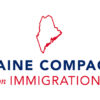HIGH-SKILLED IMMIGRANTS IN ILLINOIS
Date: April 17, 2015
Learn more about the need for high-skilled immigration reform at www.LetPJStay.com
ILLINOIS FACES A LARGE STEM SHORTAGE
- There are more STEM job openings than unemployed STEM workers: From 2009 to 2011, 1.6 STEM job openings were posted online in Illinois for every 1 unemployed STEM worker in the state.
- As STEM fields grow, this problem will likely get worse: Illinois will need to fill 266,480 new STEM jobs by 2020.
- The healthcare industry in particular will be affected by a shortfall of STEM workers: The federal government estimates Illinois will be short 21,359 registered nurses (RN) by 2020, leaving 19.5 percent of the state’s RN positions unfilled.
IMMIGRANTS ARE FILLING STEM SHORTAGES IN ILLINOIS
- Immigrants are over-represented in the STEM workforce: Immigrants are 13.9 percent of Illinois’ population, but in 2010, 27.6 percent of STEM workers with an advanced degree in Illinois were foreign-born.
- Immigrants play a critical role in the healthcare industry: In 2012, 31.4 percent of physicians in Illinois had graduated from a foreign medical school, a population that is overwhelmingly immigrant.
IMMIGRANTS INCREASINGLY POWER ILLINOIS’ INNOVATION ECONOMY
- Immigrants are more likely to study STEM than the native-born: In 2009, 56.4 percent of the students earning master’s or PhD degrees in STEM fields from Illinois’ research-intensive universities were foreign-born.
- Immigrants are inventing the products that will drive innovation over the coming decades: In 2011, 90 percent of patents awarded to the University of Illinois system had at least one foreign-born inventor, and 65 percent had at least one foreign-born student, postdoctoral fellow, or researcher, groups with no clear path to stay in the United States after graduation. In FY 2010, the university system earned $15.2 million in patent licensure revenue.
HIGH-SKILLED IMMIGRATION REFORM WOULD HELP ILLINOIS’ COMPANIES COMPETE AND CREATE AMERICAN JOBS
- High-skilled visa holders create jobs for U.S.-born workers: The new H-1B visas awarded to Illinois between 2010 and 2013 will translate into 37,669 new jobs for U.S.-born workers in the state by 2020.
- Our visa system is costing jobs and revenue: Firm-level data from the 2007 and 2008 H-1B lotteries shows that the H-1B caps from those two years alone cost U.S.-born tech workers in the Chicago metropolitan area as many as 16,642 additional jobs and as much as $233.5 million in aggregate annual earnings by 2010. Springfield, Illinois suffered as well – it was one of nine metropolitan areas to experience an H-1B shock of 10 percent or more in the 2007 to 2008 period.


